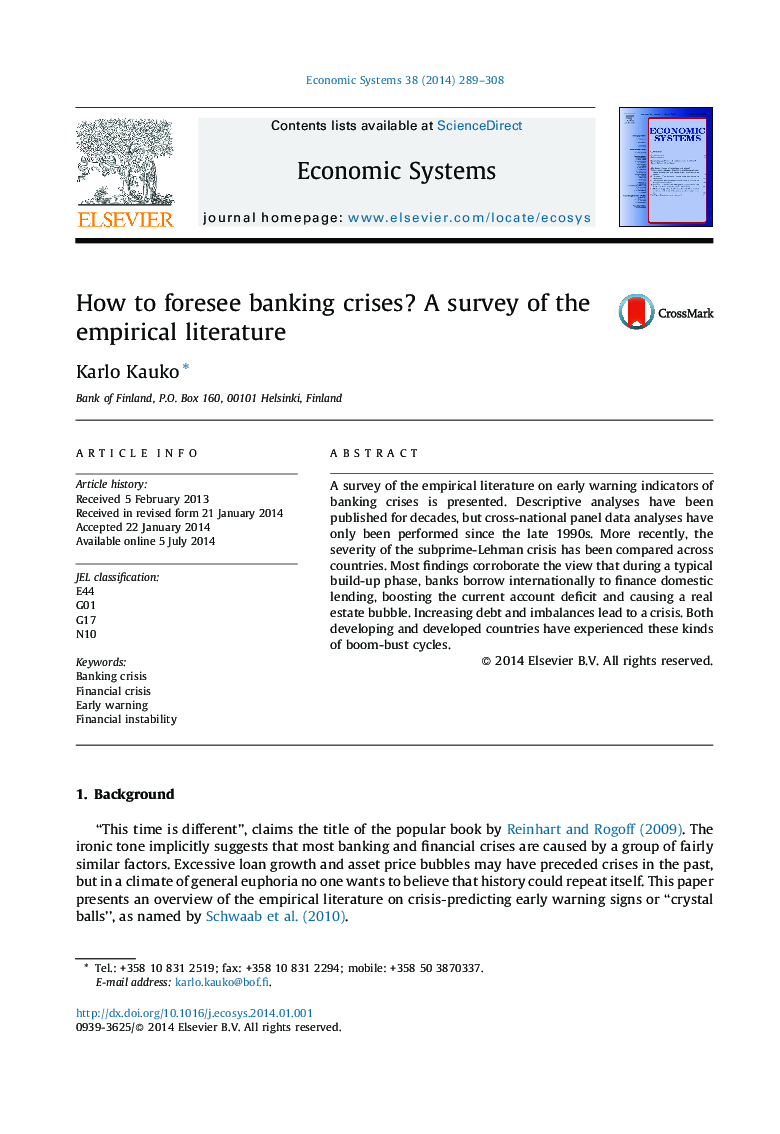| Article ID | Journal | Published Year | Pages | File Type |
|---|---|---|---|---|
| 5056540 | Economic Systems | 2014 | 20 Pages |
â¢An increasing amount of empirical research on the early warning signs of banking crises has been published.â¢A typical contribution explains the occurrence of crises with macrofinancial panel data.â¢Rapid credit growth, a current account deficit and a housing boom are typically observed during the build-up period.
A survey of the empirical literature on early warning indicators of banking crises is presented. Descriptive analyses have been published for decades, but cross-national panel data analyses have only been performed since the late 1990s. More recently, the severity of the subprime-Lehman crisis has been compared across countries. Most findings corroborate the view that during a typical build-up phase, banks borrow internationally to finance domestic lending, boosting the current account deficit and causing a real estate bubble. Increasing debt and imbalances lead to a crisis. Both developing and developed countries have experienced these kinds of boom-bust cycles.
